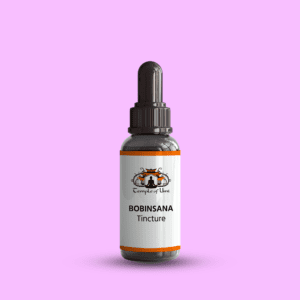Emotional Release: A Powerful Path to Healing and Inner Peace

By Temple of Umi

Table of Contents
Discover the transformative benefits of emotional release. Learn how releasing pent-up emotions can bring your life healing, clarity, and inner peace. Explore the emotional release techniques that can enhance your mental and emotional well-being.
Introduction
In our fast-paced world, many of us struggle to manage the overwhelming emotions that come with daily life. Whether it’s stress from work, personal challenges, or unresolved trauma, these emotions can weigh heavily on our minds and bodies. One of the most effective ways to heal and find balance is through emotional release. This practice involves consciously letting go of repressed emotions, allowing us to experience freedom, clarity, and inner peace. This blog post will explore what emotional release is, why it’s essential, and how you can incorporate it into your life for transformative healing.
What is Emotional Release?
Emotional release is the process of acknowledging, expressing, and letting go of emotions that have been suppressed or stored within the body. These emotions can stem from past experiences, traumatic events, or unresolved feelings that we may not have dealt with thoroughly. Over time, unprocessed emotions can accumulate and manifest as physical symptoms, mental stress, or emotional imbalances.
Emotional release aims to bring these emotions to the surface so they can be processed and released, leading to a sense of liberation. By doing so, individuals often experience a profound shift in their emotional and physical well-being. Emotional release is not about suppressing or avoiding emotions; it’s about allowing yourself to feel and release them safely and healthily. Learn more.
Why is Emotional Release Important?
1. It Helps to Reduce Stress and Anxiety
One of the main benefits of emotional release is its ability to reduce stress and anxiety. Unacknowledged emotions, such as fear, anger, or sadness, often build up over time and can trigger anxiety and tension. When we hold onto these emotions without releasing them, they can manifest in our bodies as physical symptoms like headaches, muscle tension, and even digestive problems.
By practicing emotional release, you can effectively release these negative emotions and reduce their impact on your physical and mental health. This release helps clear your mind, allowing you to regain a sense of calm and clarity.
2. It Leads to Emotional Healing
Emotional release is critical in healing from past traumas and painful experiences. Emotions remain trapped in the body when suppressed, preventing individuals from fully healing. By engaging in emotional release techniques, such as breathwork, journaling, or therapy, you can permit yourself to confront and process these emotions, facilitating deep emotional healing.
Emotional release can help break the cycle of unresolved emotional pain, allowing you to let go of past hurts and move forward in a healthier, more empowered way.
3. It Promotes Mental Clarity
Unaddressed emotions can cloud judgment and decision-making abilities. Releasing these emotions helps to clear mental fog, enabling you to think more clearly and make decisions based on present circumstances rather than past baggage. Emotional release allows you to regain focus and develop a sense of clarity that can positively impact all areas of your life.
4. It Improves Relationships
When we harbor repressed emotions, they can negatively affect our relationships with others. Whether it’s anger, jealousy, or fear, unresolved emotions can distort communication and prevent us from connecting authentically. By releasing these emotions, we can approach our relationships with a fresh perspective, fostering healthier interactions and deeper connections with those around us. Learn more.
Emotional Release Techniques to Incorporate Into Your Life
Various emotional release techniques can help you process and let go of repressed emotions. Here are some effective methods you can try:
Breathwork
Breathing exercises are among the most potent emotional release techniques. Focusing on your breath and engaging in deep, conscious breathing can help you release stored tension and emotional blockages. Breathwork helps to relax the body and mind, making it easier to release emotions such as anger, sadness, or anxiety.
A simple breathwork technique involves inhaling deeply through the nose, holding the breath for a few seconds, and then exhaling slowly through the mouth. As you exhale, imagine letting go of any negative emotions or stress. Repeat this process for a few minutes until you feel more relaxed and centered.
Journaling
Writing is a therapeutic way to release emotions. Journaling lets you put your thoughts and feelings on paper, helping you process and understand them better. Writing can provide clarity and release pent-up feelings when emotions are swirling in your mind.
Try setting aside time daily to write freely about any emotions or thoughts. Let your words flow without judgment or self-censorship. After writing, you may find that your mind feels lighter and more transparent as you’ve allowed yourself to release and reflect on your emotions.
Therapy and Counseling
Speaking with a therapist or counselor can be a highly effective way to release and process emotions. A trained professional can help you identify the root causes of your emotions, guide you through techniques to release them, and offer support as you navigate emotional healing. Therapy provides a safe, structured environment where you can express yourself without fear of judgment.
Movement and Exercise
Physical movement, such as yoga, dancing, or running, can help release emotional tension stored in the body. Our bodies often hold onto that energy when we experience stress or intense emotions. Movement allows us to release this stored energy naturally, promoting emotional and physical well-being.
Practices like yoga, in particular, combine mindful breathing with gentle movements to release emotions and promote relaxation. Regular yoga can help keep your emotional energy flowing, preventing stagnation and emotional buildup.
Meditation and Mindfulness
Meditation and mindfulness practices can help you connect with your emotions more consciously and compassionately. By taking time each day to sit in stillness and observe your thoughts without judgment, you create space for emotional release.
Mindfulness meditation encourages you to be present with whatever emotions arise without trying to suppress or change them. This acceptance helps you process emotions more healthily, preventing them from lingering and causing emotional distress.

How to Make Emotional Release Part of Your Daily Life
Incorporating emotional release into your daily routine can profoundly benefit your mental, emotional, and physical health. Here are some tips for making emotional release a regular part of your life:
- Set aside time for emotional check-ins: Take a few minutes each day to check in and assess your feelings. If you notice any negative emotions, permit yourself to process and release them.
- Practice emotional release techniques regularly: Whether it’s breathwork, journaling, or therapy, commit to practicing them daily or weekly. Consistency is key to maintaining emotional balance.
- Be compassionate with yourself: Emotional release can sometimes be challenging or uncomfortable. Be patient and kind to yourself as you navigate your emotions, understanding that healing is a process.

Determination
Emotional release is essential for anyone looking to improve their mental and emotional well-being. We can experience greater clarity, healing, and inner peace by acknowledging and releasing pent-up emotions. Whether through breathwork, journaling, therapy, or physical movement, emotional release techniques provide powerful tools for transformation. Making emotional release part of your regular self-care routine can pave the way for a healthier, more balanced life.
Useful links
- What is Sacred Plant Medicine?
- Embark on a Journey of Transformation with Spiritual Healing
- Unveiling Healing Energy at the Temple of Umi
- 10 Energy Healing Techniques to Transform Your Life
- Where to get Sacred Plant Medicine Retreat in the USA
- Top Plant medicine retreats in the USA. Learn more.
- Cost of Plant Medicine Retreat: Balancing Cost and Experience. Learn more.
- What is trauma bonding?
- A Journey into the Healing Properties of Psychedelic Mushrooms. Learn more.
- Plant Medicine Retreat Georgia – Experience Spiritual Awakening
- Spiritual Retreats Georgia
- Shaman in America Exploration
- Shamanism – Shamanic healing
- Shaman Healing Guide
- Plant Medicine ceremonies near you in the USA
- Plant Medicine Experience
- DMT Journey, Benefits, and Side Effects
- Iowaska – What is it?
- Plant medicine retreats in Georgia
- Why massage is beneficial, according to a cardiologist.
- Are mushrooms truffles – What Is a Truffle?
- 11 Best Plant Medicine Retreats in the USA for Spiritual Healing
- What is Rapé?
- What is a Tincture?
- Sacred Plant Medicine Retreats in Georgia
- 5 Ayahuasca Retreats in California Worth Exploring
- 7 Best Aya Retreats in America. Click here.
- Mcdonough Ayahuasca retreat
- Conley Ayahuasca retreat
- Whitesburg Ayahuasca retreat
- Brooks Ayahuasca retreat
- Gay Ayahuasca retreat
- Williamson Ayahuasca retreat
- Orchard Hill Ayahuasca retreat
- Glenn Ayahuasca retreat
- Luthersville Ayahuasca retreat
- Shady Dale Ayahuasca retreat
- Bowdon Junction Ayahuasca retreat
- Sargent Ayahuasca retreat
- Greenville Ayahuasca retreat
- Lovejoy Ayahuasca retreat
- Winston Ayahuasca retreat
- Rutledge Ayahuasca retreat
- Moreland Ayahuasca retreat
- Molena Ayahuasca retreat
- Lebanon Ayahuasca retreat
- Good Hope Ayahuasca retreat
- Haralson Ayahuasca retreat
- An Inclusive List of Psychedelic Quotes
- Mount Ayahuasca retreat
- Grantville Ayahuasca retreat
- Pine Lake Retreat near
- Rydal Ayahuasca retreat
- Porterdale Ayahuasca retreat
- Waco Ayahuasca retreat
- Temple Ayahuasca retreat
- Bethlehem Ayahuasca retreat
- Jenkinsburg Ayahuasca retreat
- Adairsville Ayahuasca retreat
- Red Oak Ayahuasca retreat
- Woodbury Ayahuasca retreat
- Cassville Ayahuasca retreat
- Redan Ayahuasca retreat
- North Decatur Ayahuasca retreat
- Grantville Ayahuasca retreat
- Hillsboro Ayahuasca retreat
- Jackson Ayahuasca retreat
- Braselton Ayahuasca retreat
- Zebulon Ayahuasca retreat
- Flovilla Ayahuasca retreat
- Auburn Ayahuasca retreat
- Warm Springs Ayahuasca retreat
- Scottdale Ayahuasca retreat
- Lithia Springs Ayahuasca retreat
- Villa Rica Ayahuasca retreat
- Grayson Ayahuasca retreat
- Sunny Side Ayahuasca retreat
- Senoia Ayahuasca retreat
- Locust Grove Ayahuasca retreat
- Chamblee Ayahuasca retreat
- Fairburn Ayahuasca retreat
- Snellville Ayahuasca retreat
- Monticello Ayahuasca retreat
- Union City Ayahuasca retreat
- Tallapoosa Ayahuasca retreat
- Bremen Ayahuasca retreat
- Hampton Ayahuasca retreat
- Monroe Ayahuasca retreat
- Marble Hill Ayahuasca retreat
- Madison Ayahuasca retreat
- Dawsonville Ayahuasca retreat
- Felton Ayahuasca retreat
- Concord Ayahuasca retreat
- Mansfield Ayahuasca retreat
- Taylorsville Ayahuasca retreat
- Roopville Ayahuasca retreat
- Turin Ayahuasca retreat
- Franklin Ayahuasca retreat
- Clarkdale Ayahuasca retreat
- Talking Rock Ayahuasca retreat
- Jersey Ayahuasca retreat
- Kingston Ayahuasca retreat
- Bostwick Ayahuasca retreat
- North Metro Ayahuasca retreat
- Meansville Ayahuasca retreat
- Social Circle Ayahuasca retreat
- White Ayahuasca retreat
- Rhode Island Ayahuasca retreat
- Maryland Ayahuasca retreat
- Delaware Ayahuasca retreat
- New Jersey Ayahuasca retreat
- Connecticut Ayahuasca retreat
- Massachusetts Ayahuasca retreat
- Hampshire Ayahuasca retreat
- Pennsylvania Ayahuasca retreat
- New York Ayahuasca retreat
- Florida Ayahuasca retreat
- South Carolina Ayahuasca Retreat
- North Carolina Ayahuasca Retreat
- West West Virginia Ayahuasca retreat
- Virginia Ayahuasca retreat
- Ohio Ayahuasca retreat
- Alabama Ayahuasca retreat
- Mississippi Ayahuasca retreat
- Tennessee Ayahuasca retreat
- Kentucky Ayahuasca retreat
- IndianaAyahuasca retreat
- ILLINOIS Ayahuasca retreat
- Missouri Ayahuasca retreat
- Arkansas Ayahuasca retreat
- Louisiana Ayahuasca retreat
- Texas Ayahuasca retreat
- Oklahoma Ayahuasca retreat
- KansasAyahuasca retreat
- Ayahuasca retreats near me in Experiment.
- A wellness retreat in Georgia
- What is Ayahuasca?
- Embark on a Journey of Transformation with Spiritual Healing
- Unveiling Healing Energy at the Temple of Umi
- 10 Energy Healing Techniques to Transform Your Life
- Where to get Ayahuasca in the USA
- Top Ayahuasca retreats in the USA. Learn more.
- Cost of Ayahuasca Retreat: Balancing Cost and Experience. Learn more.
- What is trauma bonding?
- A Journey into the Healing Properties of Psychedelic Mushrooms. Learn more.
- Ayahuasca Retreat Georgia – Experience Spiritual Awakening
- Spiritual Retreats Georgia
- Shaman in America Exploration
- Shamanism – Shamanic healing
- Shaman Healing Guide
- Ayahuasca ceremonies Ayahuasca ceremonies near you in the USA
- Ayahuasca Experience
- DMT Journey, Benefits, and Side Effects
- Iowaska – What is it?
- Plant medicine retreats in Georgia
- Why massage is beneficial, according to a cardiologist.
- Are mushrooms truffles – What Is a Truffle?
- 11 Best Ayahuasca Retreats in the USA for Spiritual Healing
- What is Rapé?
- What is a Tincture?
- Where to find Ayahuasca near me
- Healing retreats USA
- Best Retreats USA









